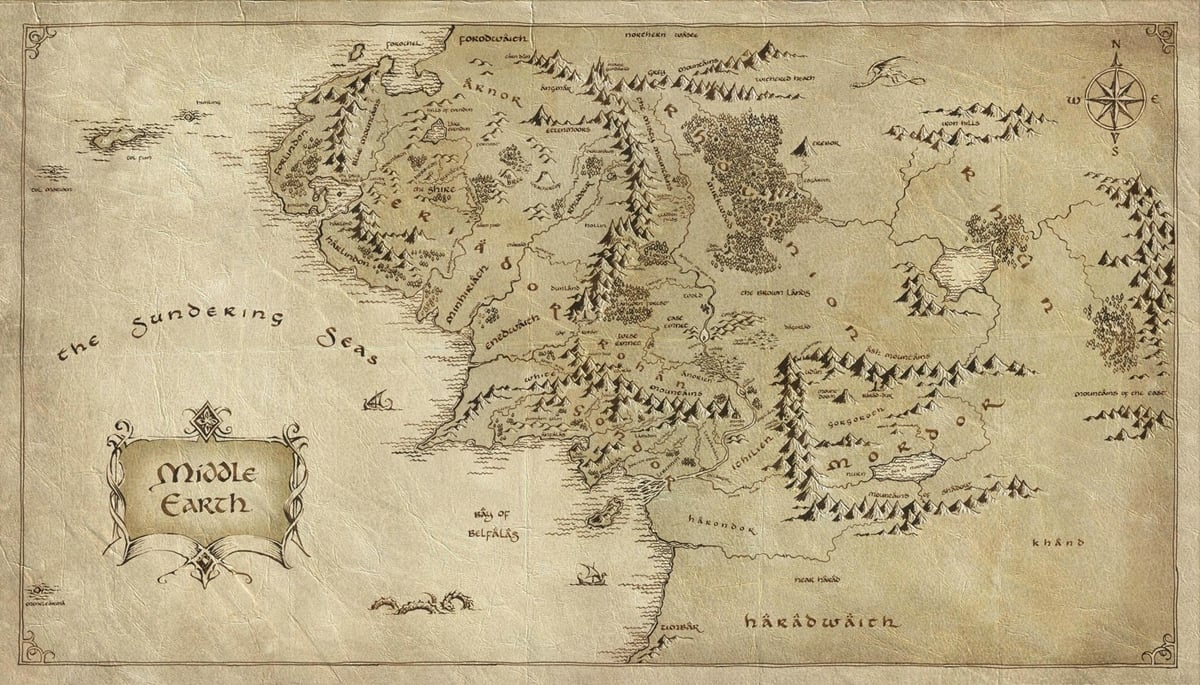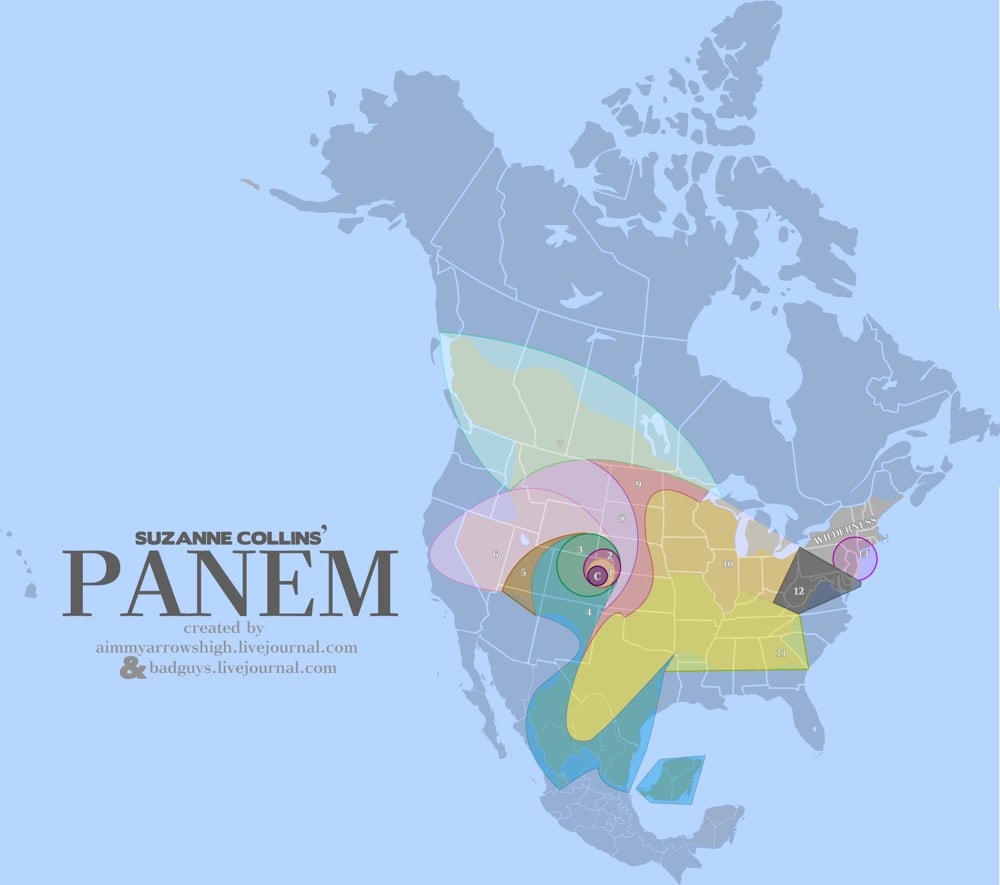The literary maps of our childhoods

At The Awl, Victoria Johnson fondly remembers the books of her youth that contained extra material. Like maps.
If I ruled the world, or at least a publishing company, all books would contain as much supplementary information as possible. Nonfiction, fiction — doesn’t matter. Every work would have an appendix filled with diagrams, background information, digressions and anecdata. And of course, maps. Lots and lots of maps.
The Hobbit, Winnie the Pooh, and The Wizard of Oz all included great maps that expanded the story in the mind of the reader. Near the end of the piece, Johnson notes that The Hunger Games didn’t include a map of Panem and links to this fan-drawn map (image here):

The Capitol is in Denver.
D12 is Appalachia.
D11 shares a border with D12, is one of the largest districts, is South of D12, and is primarily used for growing grain and produce.
D10 is primarily used for raising livestock. They do NOT process the livestock in D10. However, to feed an entire nation, D10 is likely another very large District.
D9 processes food for the Capitol and the tesserae; therefore, it likely shares borders with the food production Districts (D4, D10, D11).
D8 produces and treats textiles and is a factory District. It is POSSIBLE to reach D12 from D8 on foot over a course of weeks/months. Therefore, it does not cross a large body of water.
May the maps be ever in your books.





Stay Connected